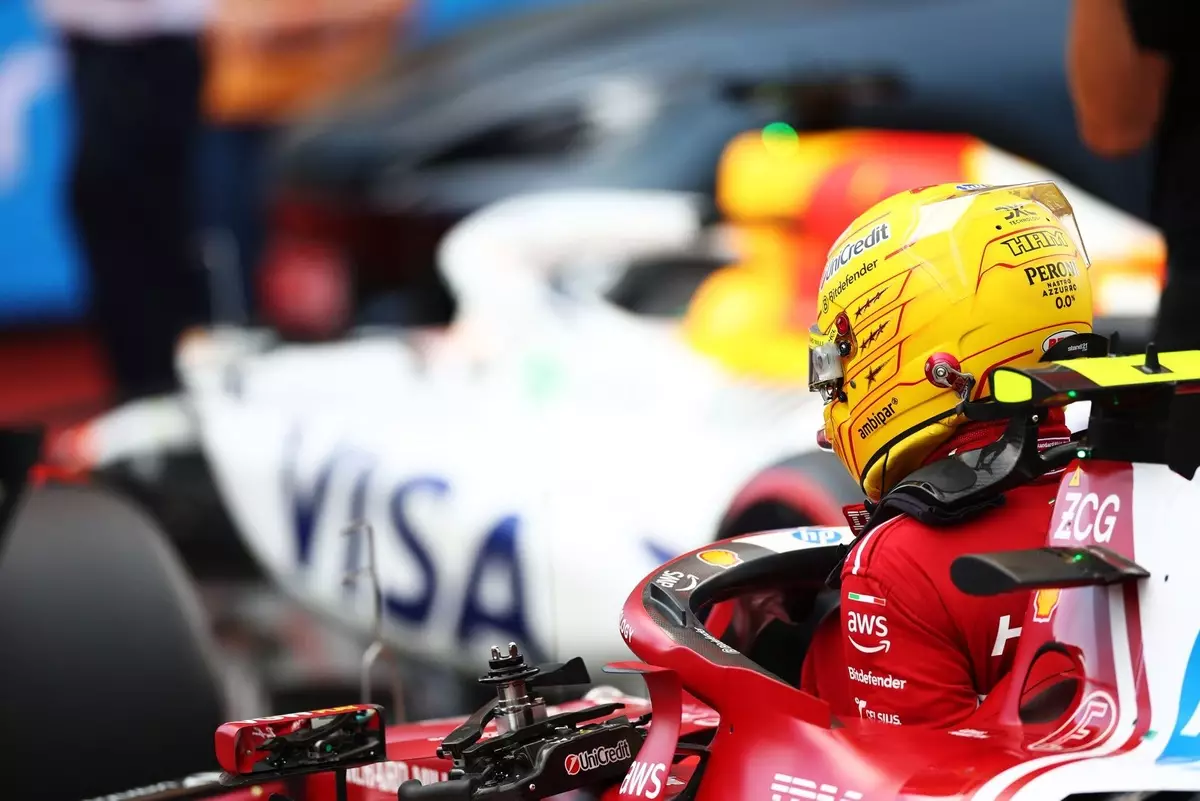The Spanish Grand Prix was a tumultuous event for Lewis Hamilton, who candidly described the race as “the worst” he has ever experienced. For a driver of his caliber, a seven-time world champion, this is not just an off day; it’s a significant emotional and psychological setback. Finishing sixth in a race where he began as a promising fourth candidate, only to later slip in positions, marred Hamilton’s otherwise stellar career. The acknowledgment that he dropped position after being instructed to let teammate Charles Leclerc pass is a stark indication of the struggles Mercedes is facing on the track.
Hamilton’s remarks highlighted a deeper issue—the shaky performance of his car. He was frank about his lack of grip and overall pace, aspects that hindered his ability to compete effectively. The circumstances were compounded by a series of strategic team decisions that resisted the natural flow of racing, leaving him feeling like a “sitting duck.” In an environment where every fraction of a second counts, Hamilton’s candid reflection emphasizes the life of formidable drivers who occasionally confront their limits amid competitive chaos.
What Went Wrong for Mercedes?
The challenges faced by Hamilton and his team indicate more than just a single race’s misfortune; they reveal systemic issues within the Mercedes performance this season. Unlike the days of magical dominance, when they could pull ahead with relative ease, the present narrative showcases a more combative landscape. Mercedes is no longer the uncontested champion; they are struggling to keep pace with their rivals, especially with Red Bull’s Max Verstappen leading the charge.
This reality is frustrating not only for Hamilton but also for fans and analysts who have come to expect a level of excellence from the Mercedes team. Hamilton’s drop to seventh before regaining a marginal sixth position at the end reflects an ineffectiveness that few anticipated. The pitstop strategies, team communications, and car setup seem out of sync—a troubling discord that could have lingering effects as the season progresses.
Leclerc’s Silver Lining in Barcelona
Meanwhile, the contrasting experience of Charles Leclerc showcases the unpredictable nature of Formula 1. Emerging from a tenuous weekend where expectations were not high, he managed to seize a podium position, creating a narrative of redemption in his own right. Leclerc’s experience acts as a testament to resilience; while he grappled with unanticipated challenges during practice and qualification, his adaptability during the race stood out.
His competitive spirit came alive at the critical moment, overtaking Verstappen during the safety car restart—a move that most enthusiasts and commentators will surely remember as a turning point. Leclerc expressed his satisfaction despite the fluctuations through the weekend, embodying a belief in hard work that resonates beyond just the race. For Leclerc, the podium finish at Barcelona is not merely a numerical achievement; it represents a year of learning from mistakes and harnessing opportunities.
The Aftermath: What Lies Ahead for Hamilton?
For Hamilton, however, the aftermath of this race brings forth challenging questions about the trajectory of his season and career. With every unfavorable performance, it becomes increasingly vital for him and his team to analyze the underlying factors of their setbacks. The focus now shifts to lessons learned and strategic adjustments ahead of the Canadian Grand Prix.
This moment of adversity could either haunt Hamilton moving forward or galvanize him to rise above the challenges and redefine his path. As much as talent plays a pivotal role in Formula 1, consistency, adaptability, and resilience also define a champion. The true test lies in how Hamilton channels his disappointment into motivation as he gears up to race on more favorable circuits.
Throughout his illustrious career, Hamilton has faced countless obstacles and emerged victorious, proving that even the fiercest champions encounter trials that require both introspection and recalibration. The question remains: will this race be a blip on an otherwise brilliant career, or a pivotal moment leading to a newfound determination? As fans watch and hope for a turnaround, one can only be eager for Hamilton’s next move in the heart-pounding world of Formula 1 racing.

